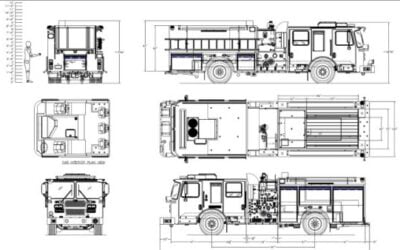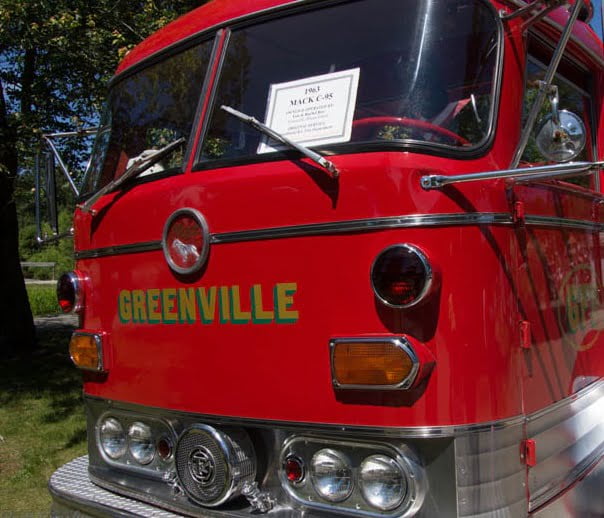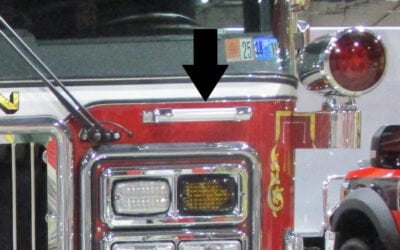During the 1970s and 1980s there was a big nationwide push to go metric. I thought it was a foolish idea back then and still do today. Decimals and fractions have worked well for eons. They still do today. Regardless, almost five decades ago someone in the federal bureaucracy thought it was a great idea to use metrics.
Deciphering and Navigating NFPA 1900
The National Fire Protection Association’s NFPA 1900 Standard for Aircraft Rescue and Firefighting Vehicles, Automotive Fire Apparatus, Wildland Fire Apparatus and Automotive Ambulances becomes effective Jan. 1, 2024. It is not an easy read and it will not fit in your back pocket.
NFPA Warning Lights: Liability & The Little People
By Bill Adams When buying a new rig, purchasers can easily spend five figures for a warning light system that is compliant with the National Fire Protection Association NFPA 1901 Standard for Automotive Fire Apparatus. Really affluent purchasers might specify...
NFPA 1901 Zone C Rear Lighting – Part 2
By Bill Adams Part 1 ended inferring the rear ends of most pumpers are congested work areas. And it questioned whether apparatus manufacturers’ standard locations for chassis and warning lights could hinder fireground operations. This part continues that...
NFPA 1901 Zone C Rear Lighting – Part 1
By Bill Adams This article is not intended to disparage, demonize, or criticize fire apparatus purchasers; apparatus and warning light manufacturers; or any entity that governs, regulates, or mandates the design of fire apparatus. It addresses some misconceptions...
NFPA Warning Light Systems & Certifications
By Bill Adams In the industrial and manufacturing world, standardization is making multiple identical products to lower the cost per unit. The concept is embraced by most fire apparatus manufacturers (OEMs); however, it is detested by all but a very few fire...
FDIC International 2021: Access Steps and Handrails
By Bill Adams After a year’s hiatus, the Fire Department Instructor’s Conference (FDIC) in Indianapolis, IN, had numerous apparatus on display from multiple vendors. In addition to unveiling new products and apparatus designs, most rigs were equipped with traditional...
NFPA-Mandated Flash Rates: Fast, Slow, or Not at All?
By Bill Adams This article is not an accusation that the writers of the National Fire Protection Association’s NFPA 1901 Standard for Automotive Fire Apparatus purposely promulgate requirements that are conflicting, divergent, or confusing. They just appear to be....
NFPA-Mandated LED Lightbars: Fact or Fallacy?
By Bill Adams A fact is a verifiable truth; fiction is not. A politically correct way of dodging the truth is to call a statement a fallacy. A fallacy can be defined as a misconception, a myth, sometimes a mistake, even a fairytale and “perhaps it’s something you...
Grab Handle Negligence?
By Bill Adams In the early 1980s, a New England firefighter fell off a rig and eventually died from his injuries. His family successfully sued the fire apparatus manufacturer that built the apparatus. It was a custom pumper with an open canopy cab that featured a...
Transverse Hose Storage
Transverse hose storage for handlines has been around since the late 1940s. Commonly called crosslays and mattydales, they’re usually located immediately above or recessed into the top of a midship-mounted pump enclosure. Some are found on front bumper extensions and on the rear step–also known as the tailboard or more politically correct as the rear work platform. They all feature the principle of deploying the hose from either side of the rig. All are loaded from the top. It is irrelevant if the hose is preconnected. What is important is ensuring the intended hose fits, it is stored at a workable height, and can be deployed as intended. Adequate purchasing specifications will ensure so.
NFPA 1901 & FAMA Signs: Sensible or Nonsensical? Part 2
By Bill Adams Part 1 illustrated this writer’s opinion that the requirement for and installation of “warning signs” on fire apparatus could be scrutinized. This part further investigates the whys and wherefores of providing signage. There is no intent to disparage any...














